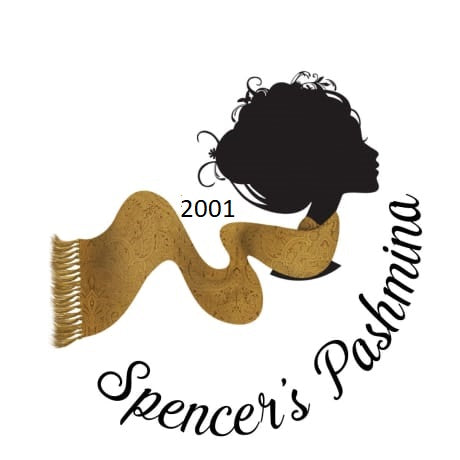The word Pashmina has its origin in the Persian word Pashm which means wool. Some are of the view that Pashm means special kind of wool which is warmer than the ordinary. As of today, the word Pashmina is associated with other words as Pashmina wool, Pashmina fabric, Pashmina shawl etc. Once used by itself, it is taken to mean a scarf, wrap, stole or a shawl which are a broad band of cloth with varying rectangular dimensions worn about the shoulders, around the neck, over the head, or about the waist. Pashmina is made from pashmina wool is obtained from the seasonally shed outer skin of the high altitude Himalayan/Tibetan mountain goats. These mountain goats are known as Changthangi goat (Capra aegagrus hircus) also called pashmina goats. These are found in the Ladakh region of the aforementioned mountain ranges. Pashmina wool so obtained is woven on handlooms to produce pashmina fabric which in turn produces pashmina shawls and its other variants with varying rectangular dimensions. Local artisans have a very major role to play produce the fine pashmina scarves and shawls. Pashmina shawl and other variants are soft and gentle to touch and feel, and, are light in weight but are warmer than the scarves and shawls made from ordinary woolen, acrylic, viscose and other synthetic fabrics. The reason about this extra warmth of pashmina is the raw material of pashmina wool which is the outer skin seasonally shed by the high altitude Himalayan/Tibetan mountain goats. Although the diameter of the wool is only 12 to 16 microns, the pashmina wool insulates the goat from the harshness of the extreme cold weather at the high altitude mountains, around 10,000 feet and more above the sea level.
Pashmina is a luxurious women’s fashion accessory which complements their magnificence. It is the favorite of the celebrities. However, two aspects tend to tarnish the image of the pashmina scarves and shawls. Firstly, it is incorrectly propagated that the pashmina are produced from the underbelly of the mountain goats by killing them. But that is not the case. It is Shahtoosh which is produced from the underbelly after killing the goats. Production of Shahtoosh is banned and declared illegal worldwide. Notwithstanding the same unscrupulous traders continue to indulge in highly profitable illegal trading of Shahtoosh which costs around a thousand US dollars apiece. Pashmina scarves and shawls, on the other hand cost about a hundred US dollars apiece. Secondly, owing to the popularity of pashmina, the market is full of fake pashmina. Some sellers even use the terminologies as acrylic pashmina, viscose pashmina etc. Viscose and acrylic are made from synthetic material and pashmina is produced from the animals.

